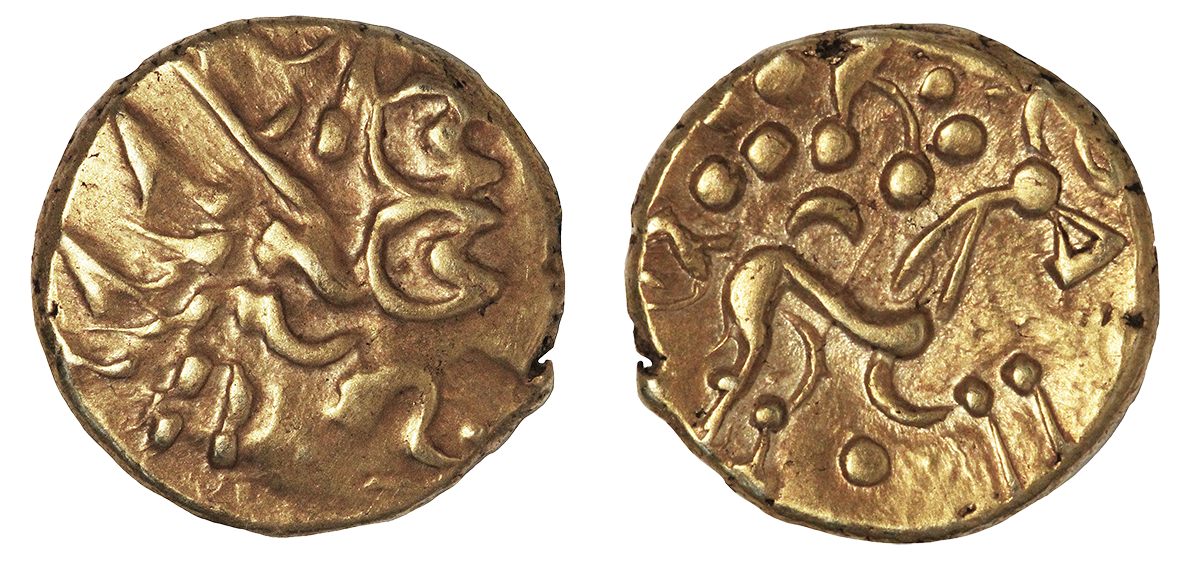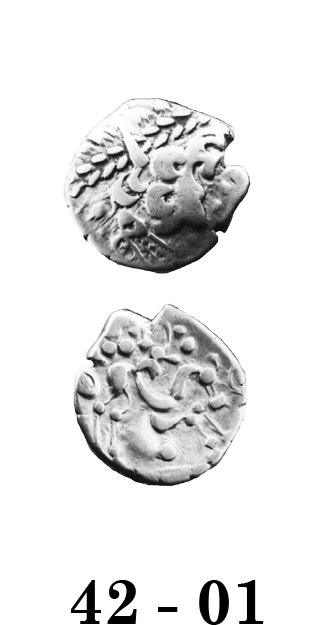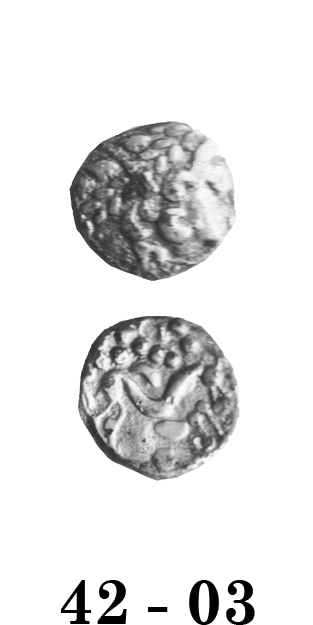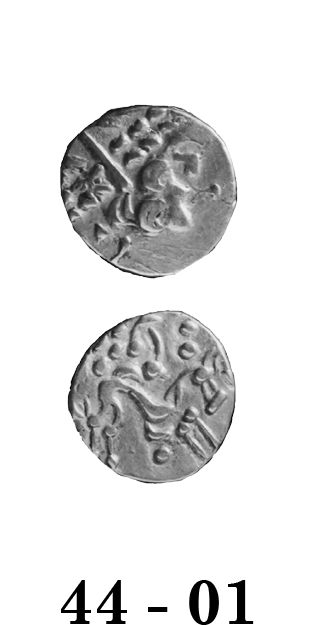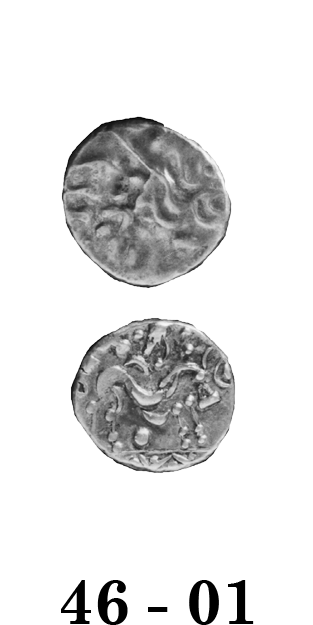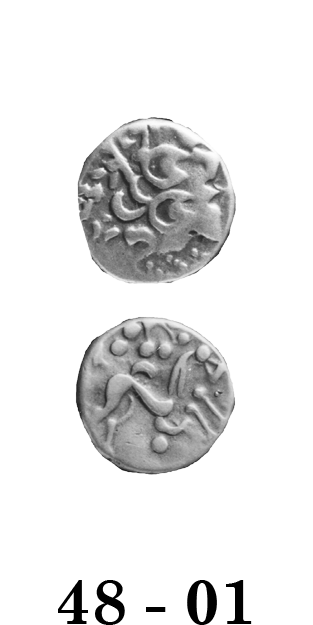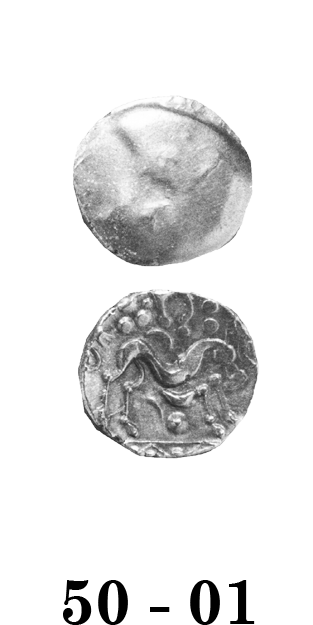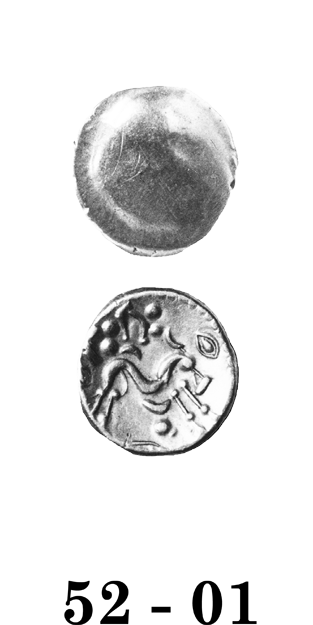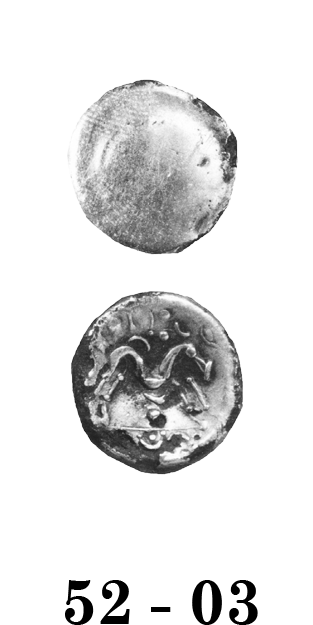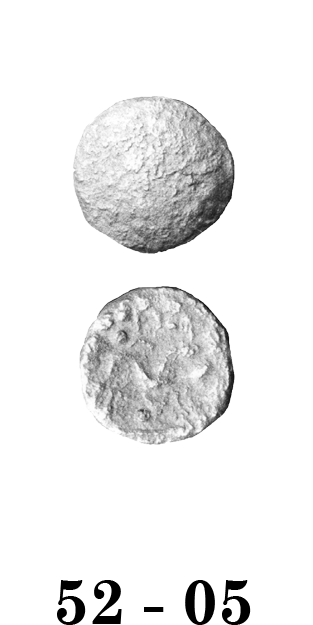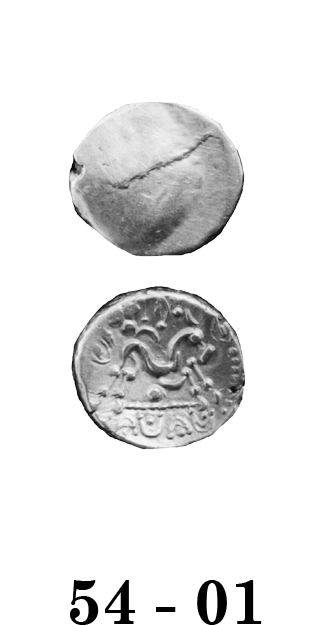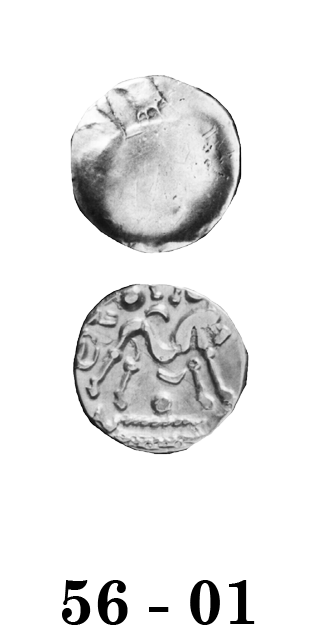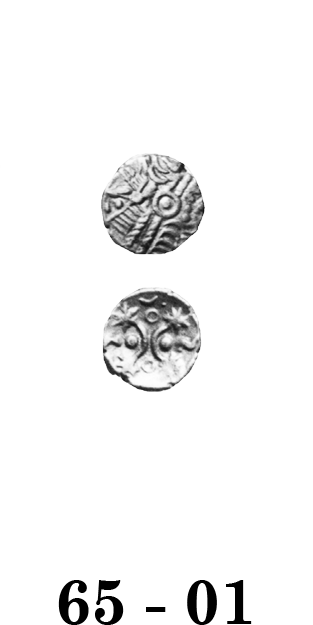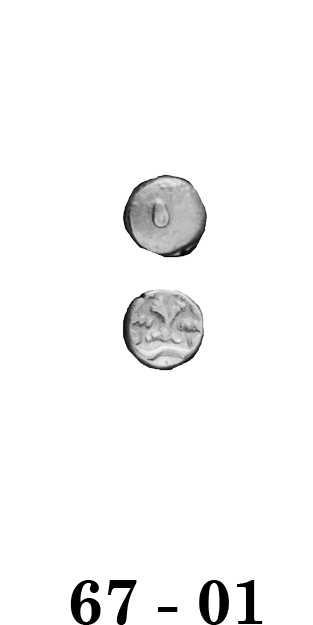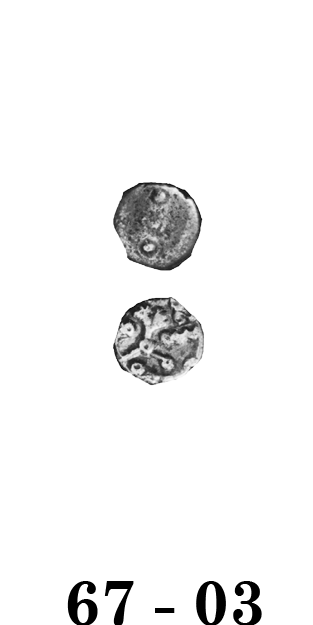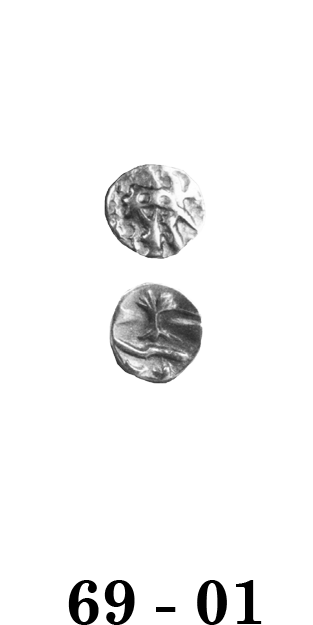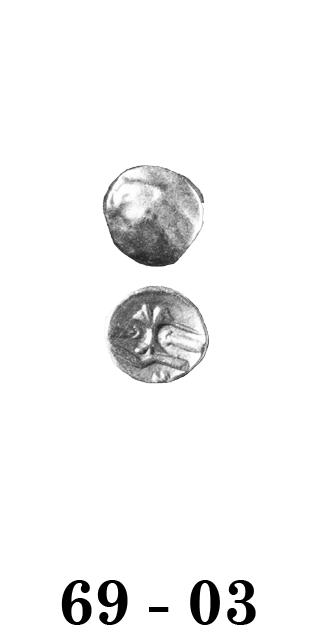
Celtic Coinage of Britain
third edition
Click on coin to see hidden information
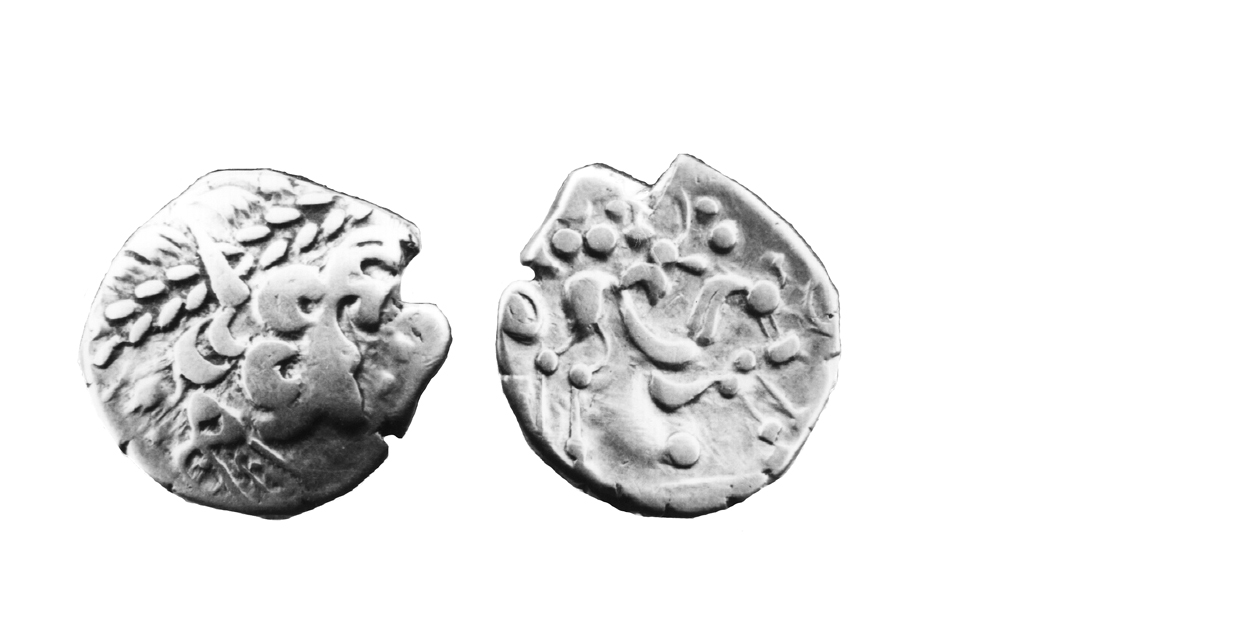
42 - 01 Abstract Design Type
90-80 B.C Common
Gold Stater 7.00 gms. 19 mm
Earliest Record: Evans, 1864
OBV: abstracted head of Apollo right
Identifying points:
- enlarged eye
- pellet and two curves for nose
REV: disjointed horse right
Identifying points:
- nose made up of pellet and two lines
- large pellet below horse
CLASSIFICATION: Gallo-Belgic C
NOTES:
- Scheers Cl. C-II. Pl. IV, no. 86
- Standard weight given
- Ambianic origin
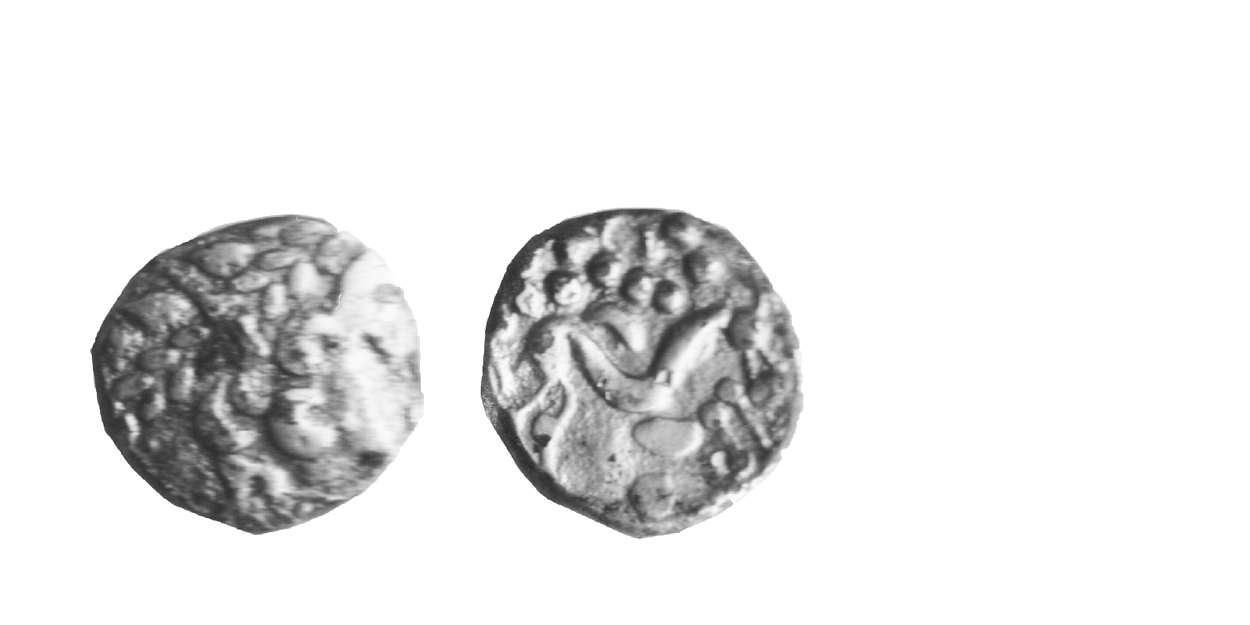
42 - 03 Abstract Design Type
90-80 B.C. Extremely Rare
Gold/Copper Plated Stater 4.24 gms. 17 mm
Earliest Record: Sellwood, 1984 (Danebury Excavations)
OBV: abstracted head of Apollo right
Identifying points:
- as 42 - 01
REV: disjointed horse right
Identifying points:
- as 42 - 01
CLASSIFICATION: Gallo-Belgic C
NOTES:
- An ancient forgery
- Weight of illustrated coin given
- The illustrated coin was found during excavations at Danebury
- An XRF study of the gold coating revealed traces of mercury, suggesting the mercury-gilding process was used – a very early occurrence of this technique
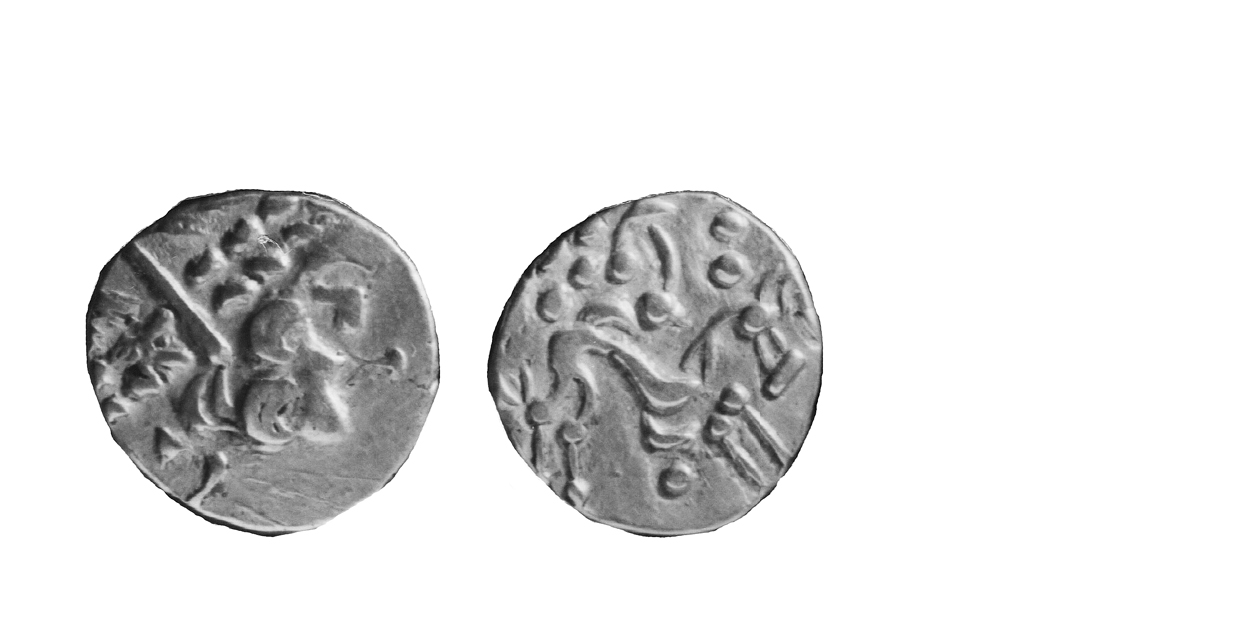
44 - 01 Abstract Design Type
80-70 B.C. Scarce
Gold Stater 6.65 gms. 16 mm
Earliest Record: De La Tour, 1892
OBV: abstracted head of Apollo right
Identifying points:
- face smaller than on 42 - 01
- larger eye than on 42 - 01
- curves of nose spread further apart than on 42 - 01
REV: disjointed horse right
Identifying points:
- horse more stylized than on 42 - 01
CLASSIFICATION: Gallo-Belgic C
NOTES:
- Scheers Cl. C III, Pl. IV, nos. 87-88
- Standard weight given
- Ambianic origin
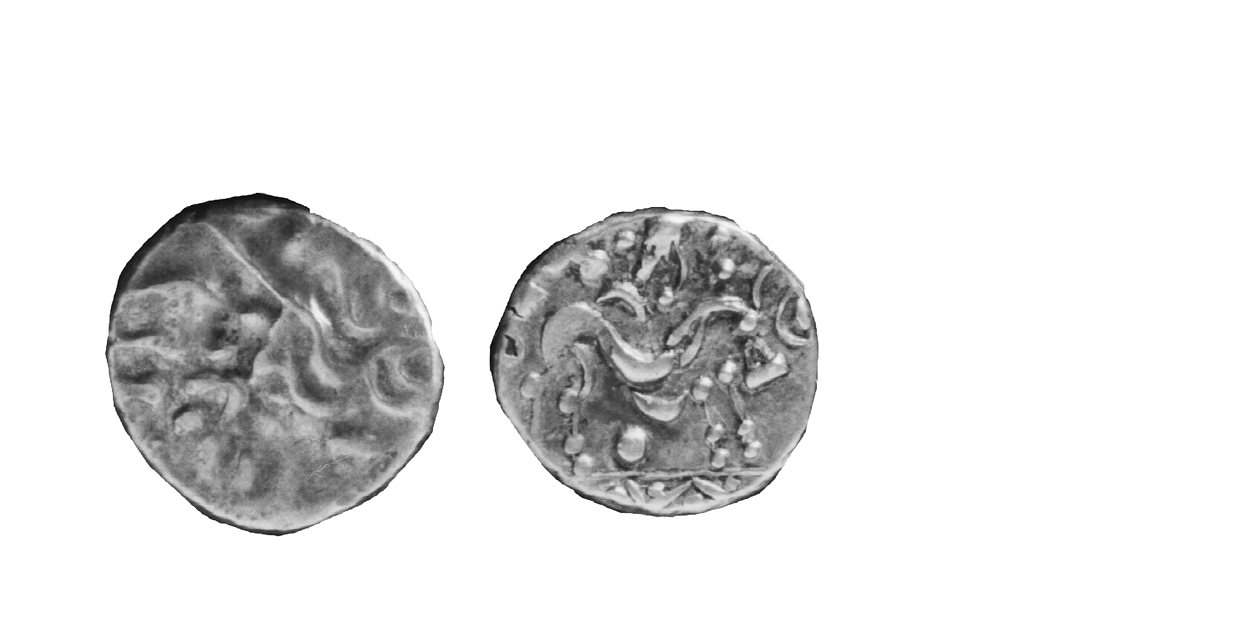
46 - 01 Abstract Design Type
80-70 B.C. Scarce
Gold Stater 6.45 gms. 17 mm
Earliest Record: Mack, 1953
OBV: abstracted head of Apollo right
Identifying points:
- Wreath more dominant than on 44-1
- lips missing
REV: disjointed horse right
Identifying points:
- exergual line normally visible
CLASSIFICATION: Gallo-Belgic C
NOTES:
- Scheers Cl. C-IV, Pl. IV, nos. 89-90
- Standard weight given
- Ambianic origin
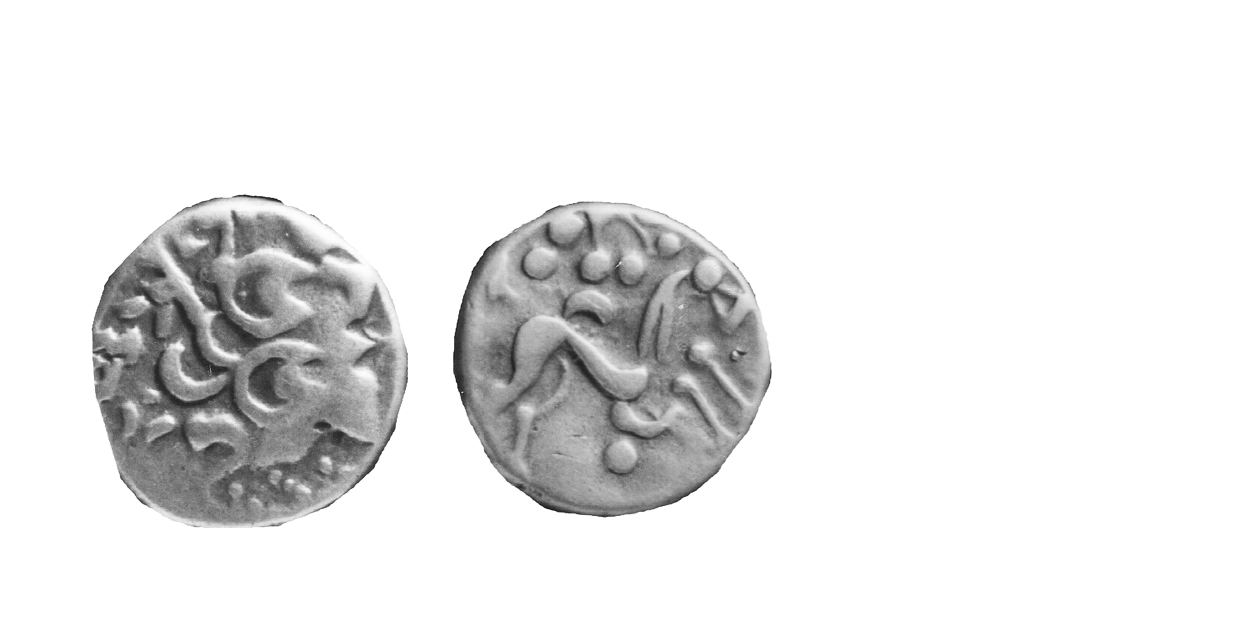
48 - 01 Abstract Design Type
80-70 B.C. Scarce
Gold Stater 6.45 gms. 16 mm
Earliest Record: De La Tour, 1892
OBV: abstracted head of Apollo right
Identifying points:
- head is now unrecognizable
- face small compared to 46 - 01
- face less dominant in design compared to 46 - 01
REV: disjointed horse right
Identifying points:
- horse is thin and lanky
CLASSIFICATION: Gallo-Belgic C
NOTES:
- Scheers Cl. C V, Pl. IV, no. 91
- Standard weight given
- Ambianic origin
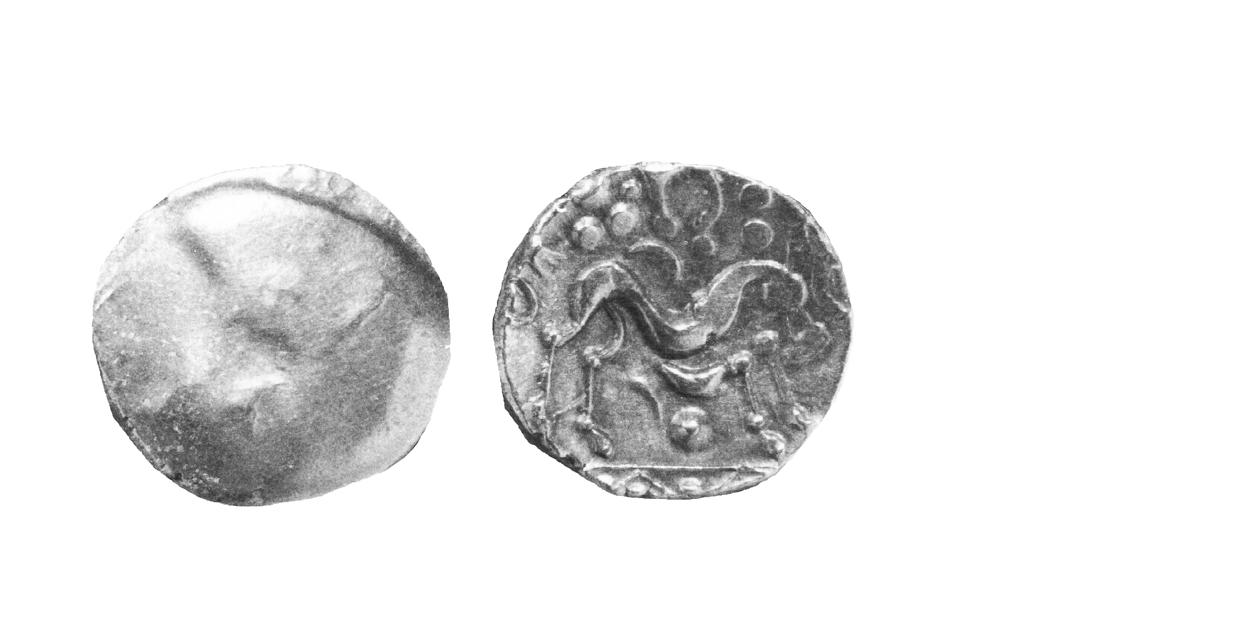
50 - 01 Gallic War Type
ca. 65 B.C. Common
Gold Stater 6.35 gms. 16 mm
Earliest Record: Stukeley, 1776b
OBV: blank
REV: disjointed horse
Identifying points:
- large, tall horse
- large space surrounding pellet below horse
- zig-zag in exergue
CLASSIFICATION: Gallo-Belgic E
NOTES:
- Scheers Cl. E-I, Pl. VI, nos. 151-152
- Standard weight given
- Ambianic origin
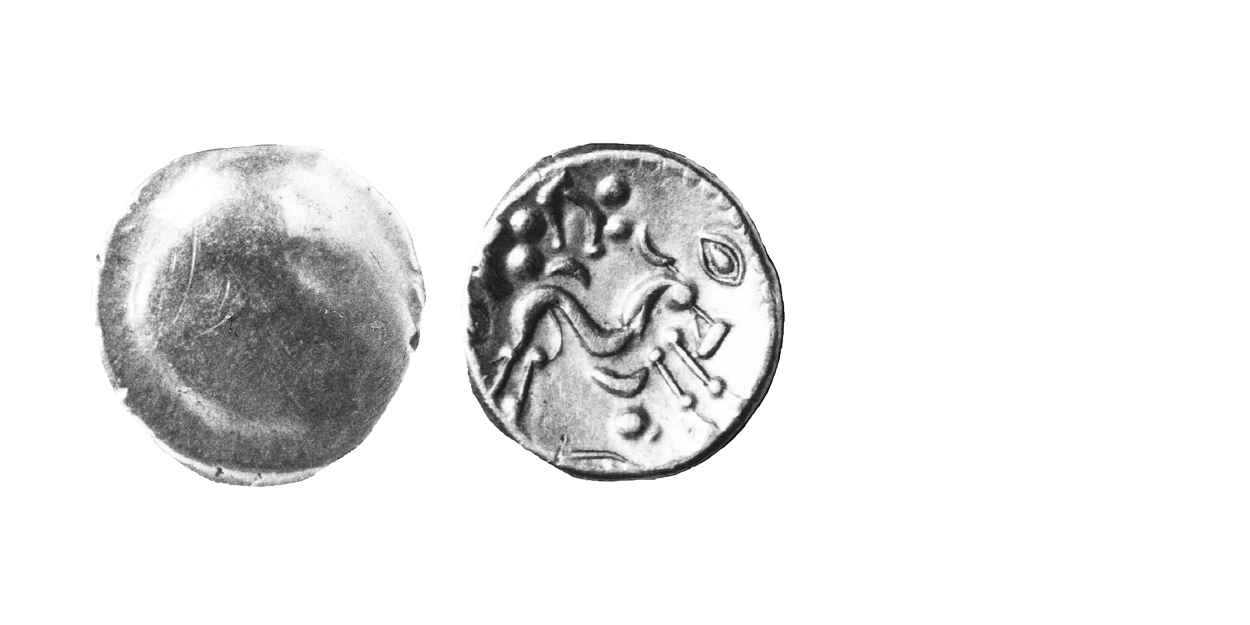
52 - 01 Gallic War Type
ca. 60 B.C. Common
Gold Stater 6.25 gms. 16 mm
Earliest Record: Camden, 1789 (Gough edition)
OBV: blank
REV: disjointed horse right
Identifying points:
- horse smaller than on 50 - 01
- crescents and pellets in exergue
- exergual line is continuous
CLASSIFICATION: Gallo-Belgic E
NOTES:
- Scheers Cl. E-II, Pl. Vl, no. 153
- Standard weight given
- Ambianic origin
- Modern forgery exists (designated 52 - 0IF, but not listed in this catalogue)
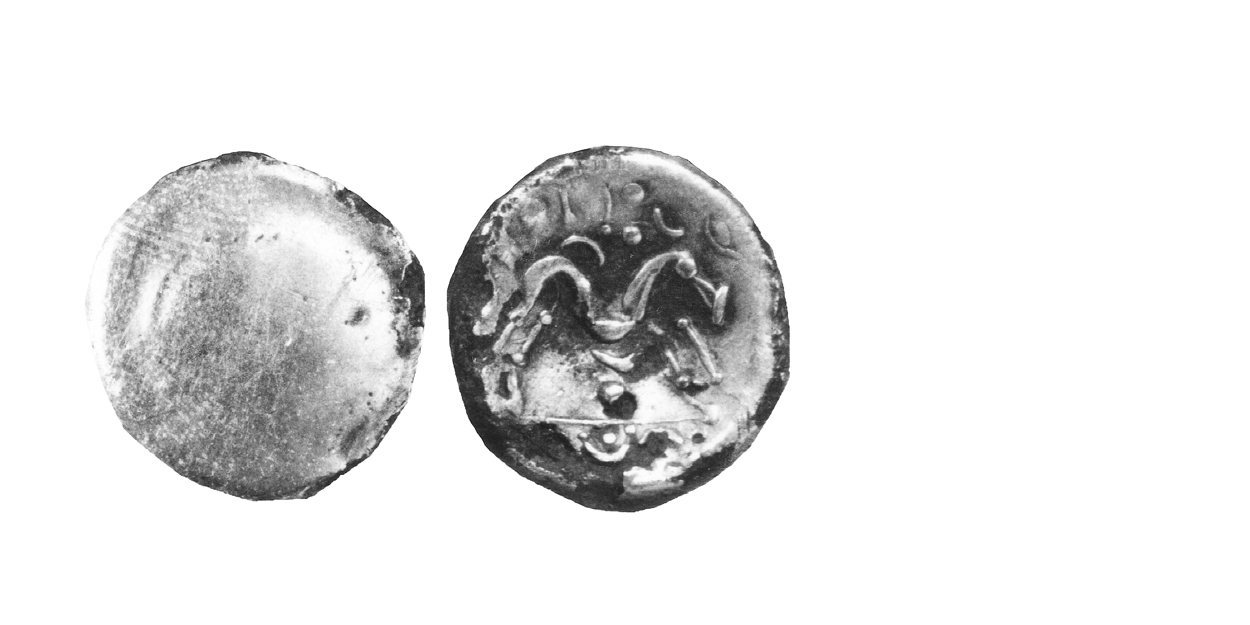
52 - 03 Gallic War Type
ca. 60 B.C. Extremely Rare
Gold/Silver Plated Stater 16 mm
Earliest Record: Van Arsdell, 1989
OBV: blank
REV: disjointed horse right
Identifying points:
- as 52 - 01
CLASSIFICATION: Gallo-Belgic E
NOTES:
- Scheers Cl. E-II, Pl. VI, no. 153
- Silver core
- Ancient forgery, made by wrapping gold sheet around a silver core, and bonding with heat
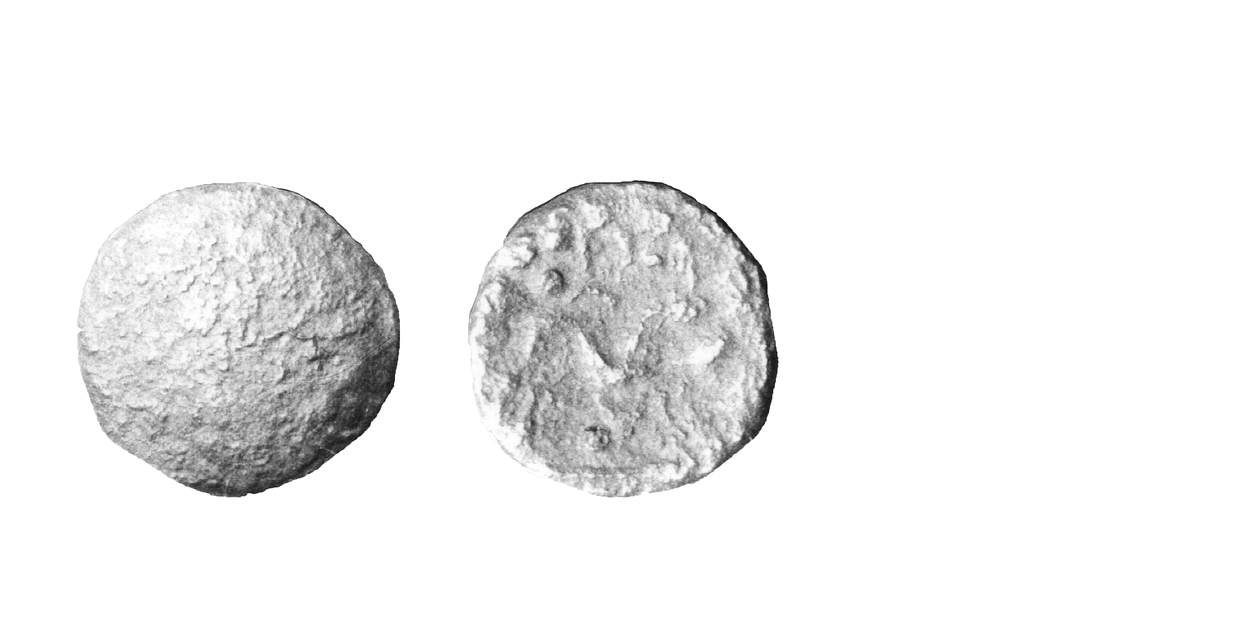
52 - 05 Gallic War Type
ca. 60 B.C. Extremely Rare
Gold/Copper Plated Stater 16 mm
Earliest Record: Van Arsdell, 1989
OBV: blank
REV: disjointed horse right
- as 52 - 01
CLASSIFICATION: Gallo-Belgic E
NOTES:
- Scheers Cl. E-II, Pl. VI, no. 153
- Bronze core
- Ancient forgery
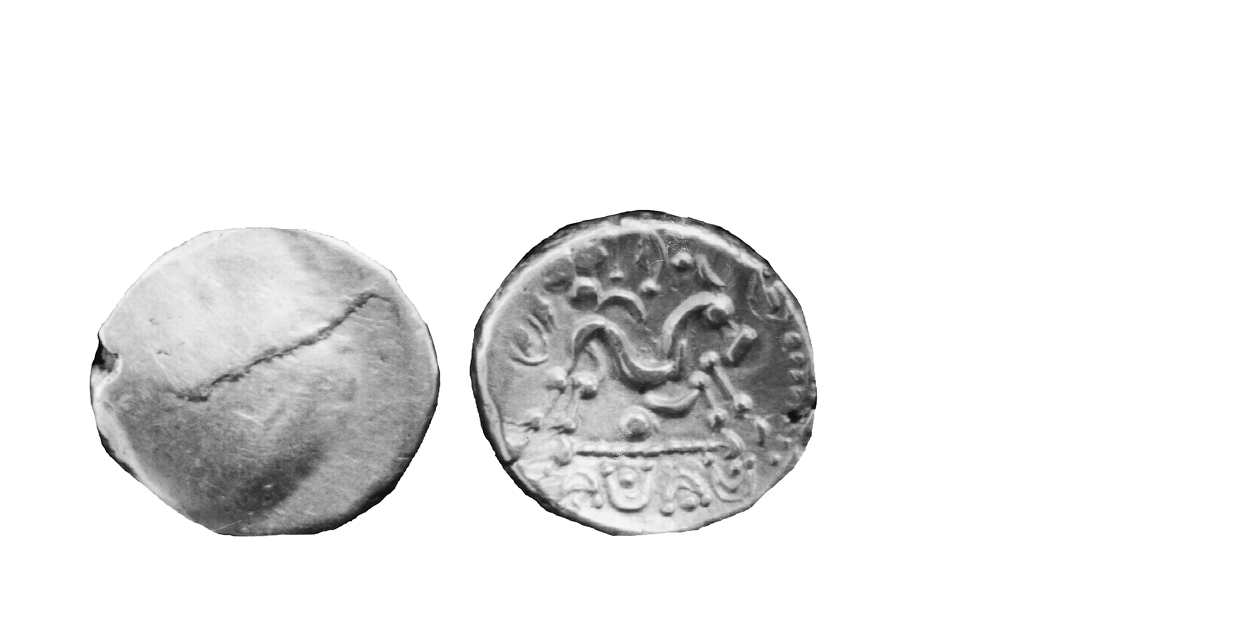
54 - 01 Gallic War Type
60-55 B.C. Common
Gold Stater 6.20 gms. 16 mm
Earliest Record: De La Tour, 1892
OBV: blank
REV: disjointed horse right
Identifying points:
- separate pellets and crescents in exergue
- exergual line made up of pellets
CLASSIFICATION: Gallo-Belgic E
NOTES:
- Scheers Cl. E-III, Pl. VI, no. 154
- See Modern forgery 54 - 01F
- Standard weight given
- Ambianic origin
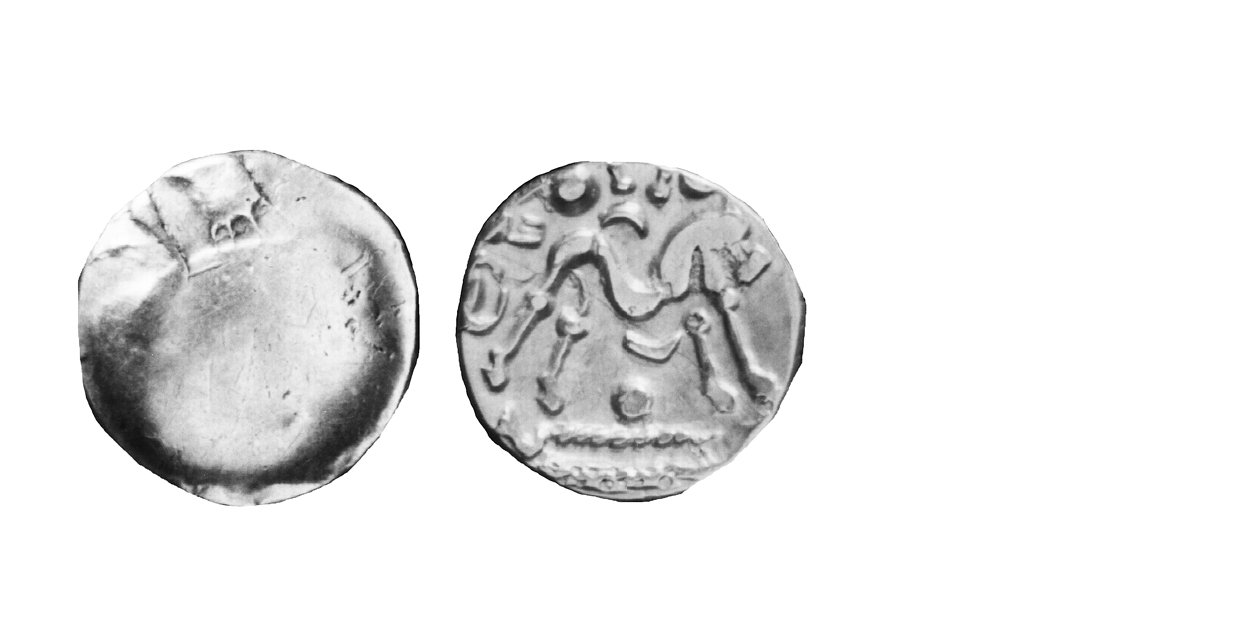
56 - 01 Gallic War Type
ca. 55 B.C. Common
Gold Stater 6.05 gms. 17 mm
Earliest Record: Evans, 1864
OBV: blank
REV: disjointed horse right
Identifying points:
- double exergual line
- cruder die-cutting than 54 - 01
CLASSIFICATION: Gallo-Belgic E
NOTES:
- Scheers Cl. E-IV, Pl. VI, no. 155
- Standard weight given
- Ambianic origin
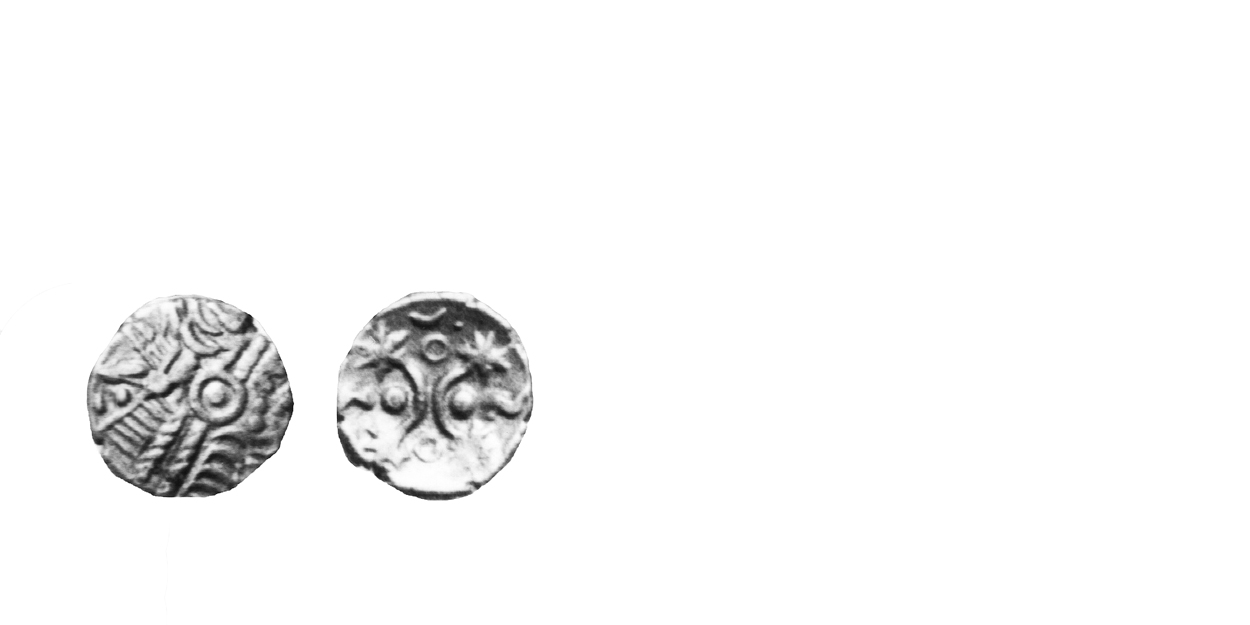
65 - 01 Geometric Type
65-50 B.C. Extremely Rare
Gold Quarter Stater 1.35 gms. 10 mm
Earliest Record: Mack, 1953
OBV: abstracted head of Apollo
Identifying points:
- large pellet-in-ring motif in centre
REV: opposed crescents with pellet and 6-pointed stars
CLASSIFICATION: Gallo-Belgic DA
NOTES:
- Other previously-designated Geometric Types are now believed to be catalogued under Kentish tribes, see 144 - 01 to 147 - 01
- Standard weight given
- Mack was uncertain about the Gallo-Belgic DA attribution
- Most in museums
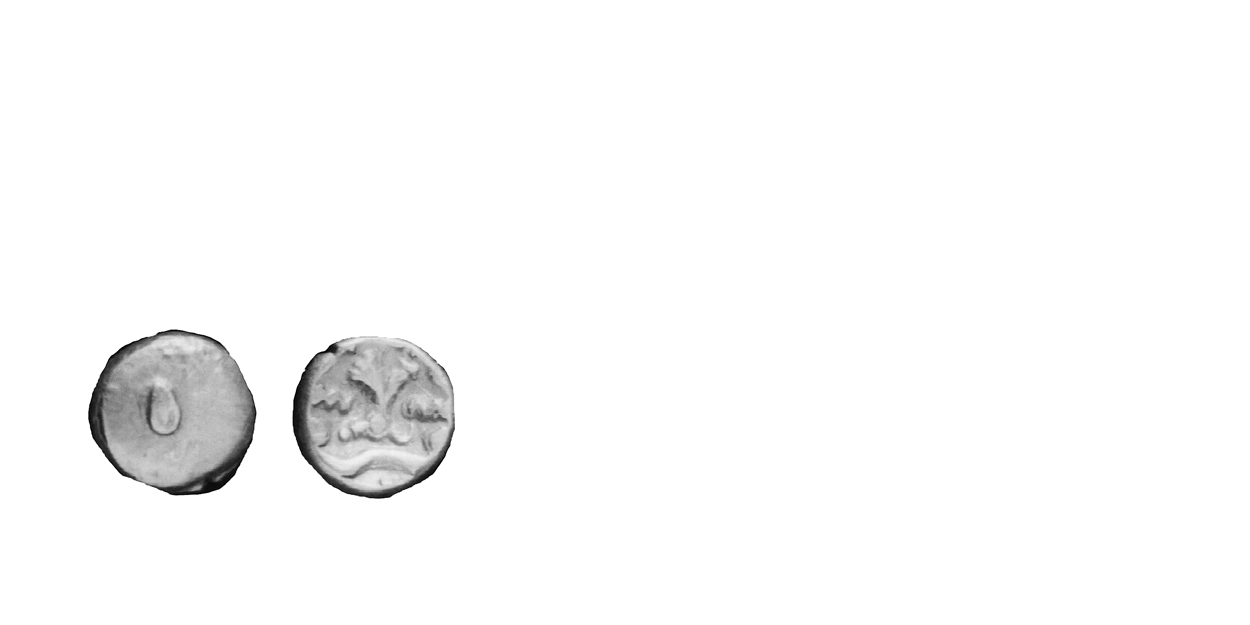
67 - 01 Geometric Type
65-50 B.C. Extremely Rare
Gold Quarter Stater 1.35 gms. 8 mm
Earliest Record: Mack, 1953
OBV: Almost plain
Identifying points:
- small flower-like object in centre
REV: Geometric pattern
Identifying points:
- tree like object in centre
- lines and curves near tree
CLASSIFICATION: Gallo-Belgic DA
NOTES:
- Standard weight given
- Uncertain tribal origin
- Many in museums
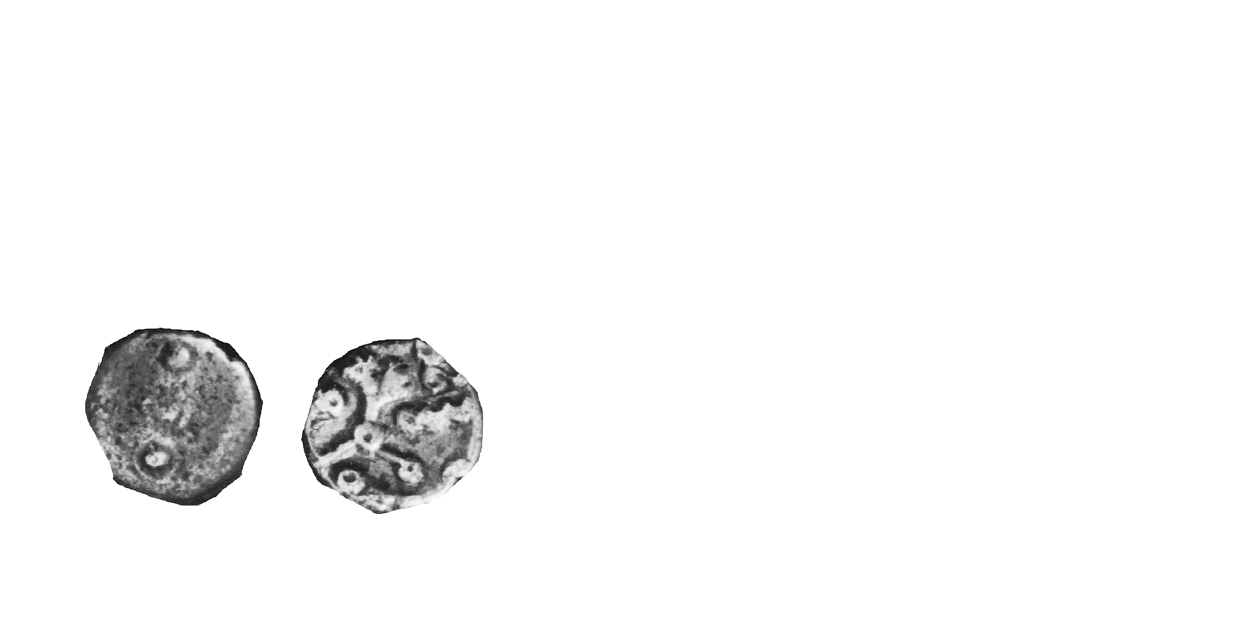
67 - 03 Geometric Type
65-50 B.C. Extremely Rare
Gold Quarter Stater 1.35 gms. 8 mm
Earliest Record: Evans, 1890
OBV: Almost plain
Identifying points:
- remnants of flower like object in centre
REV: Geometric pattern
Identifying points:
- similar to 67 - 01
- small rings below tree
CLASSIFICATION: Gallo-Belgic D
NOTES:
- Standard weight given
- Uncertain tribal origin
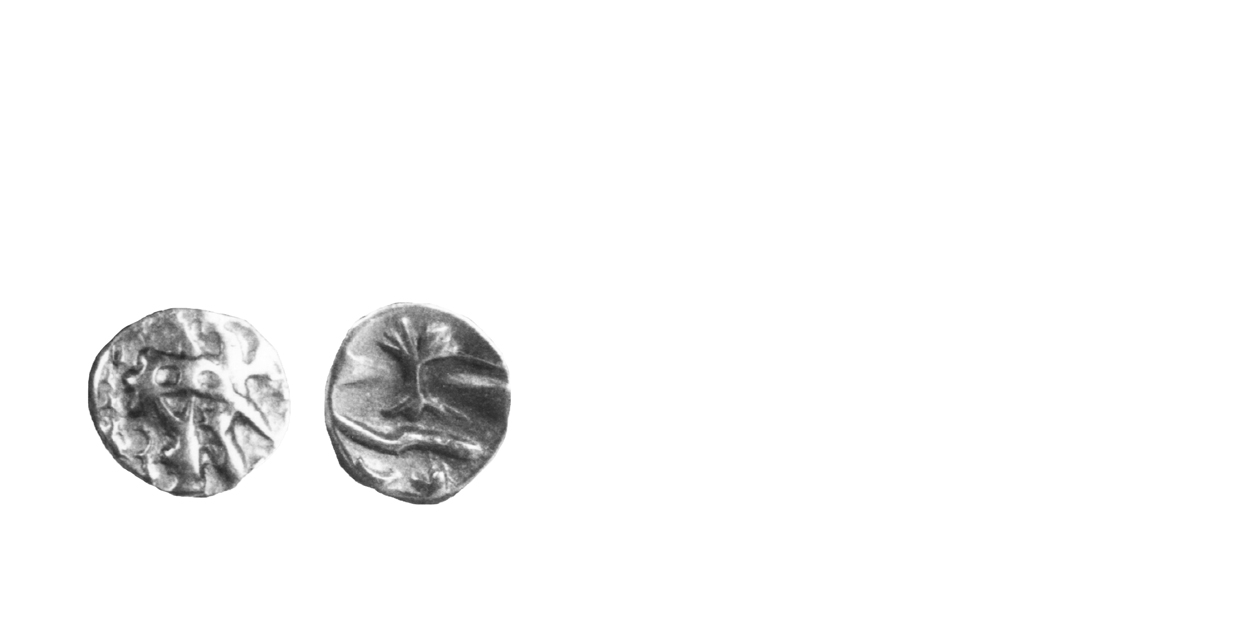
69 - 01 Geometric Type
65-50 B.C. Common
Gold Quarter Stater 1.50 gms. 11 mm
Earliest Record: Camden, 1789 (Gough edition)
OBV: Geometric pattern
Identifying points:
- large curve with holes
- three irregular shapes below
REV: Geometric patter
Identifying points:
- tree like object in centre
- lines and curves near tree
CLASSIFICATION: Gallo-Belgic DC
NOTES:
- Standard weight given
- Uncertain tribal origin
- Some in museums
- Obverse has been described as a wolf-and-twins or a boat with three occupants
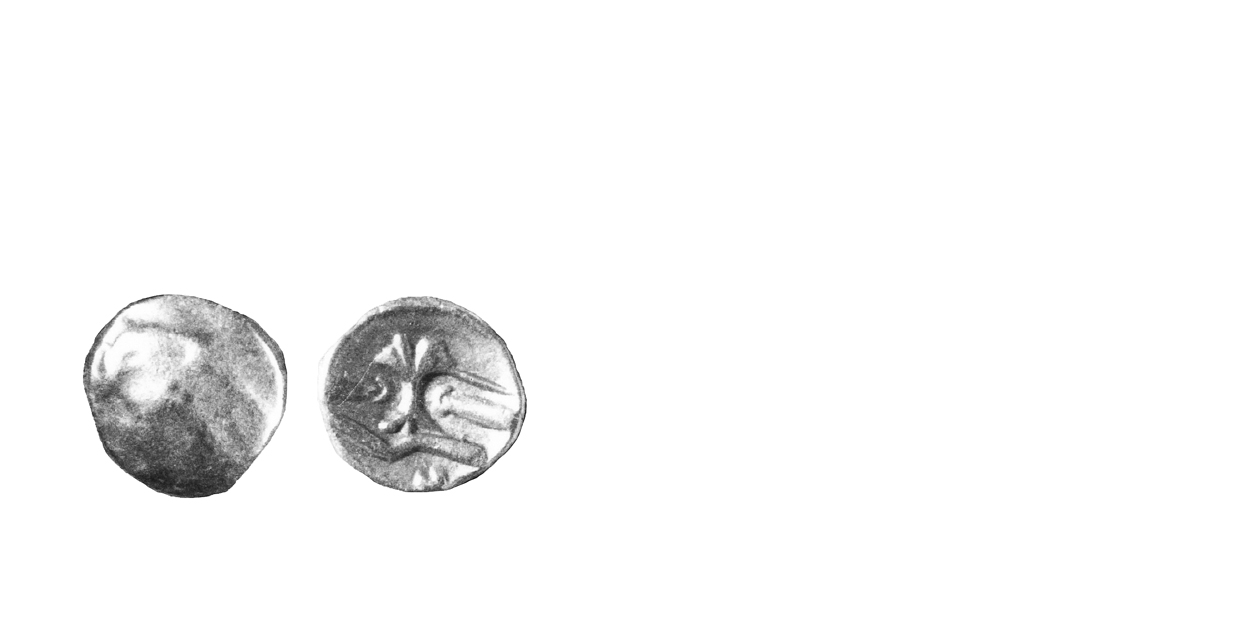
69 - 03 Geometric Type
65-50 B.C. Common
Gold Quarter Stater 1.50 gms. 14 mm
Earliest Record: Mack, 1953
OBV: Almost plain
Identifying points:
- remnants of design from 69 - 01 may appear
REV: Geometric pattern
Identifying points:
- tree-like object in centre
- lines and curves near tree
- small curve on either side of tree
CLASSIFICATION: Gallo-Belgic DB
NOTES:
- Standard weight given
- Uncertain tribal origin
- Some in museums
Imported Coinage
